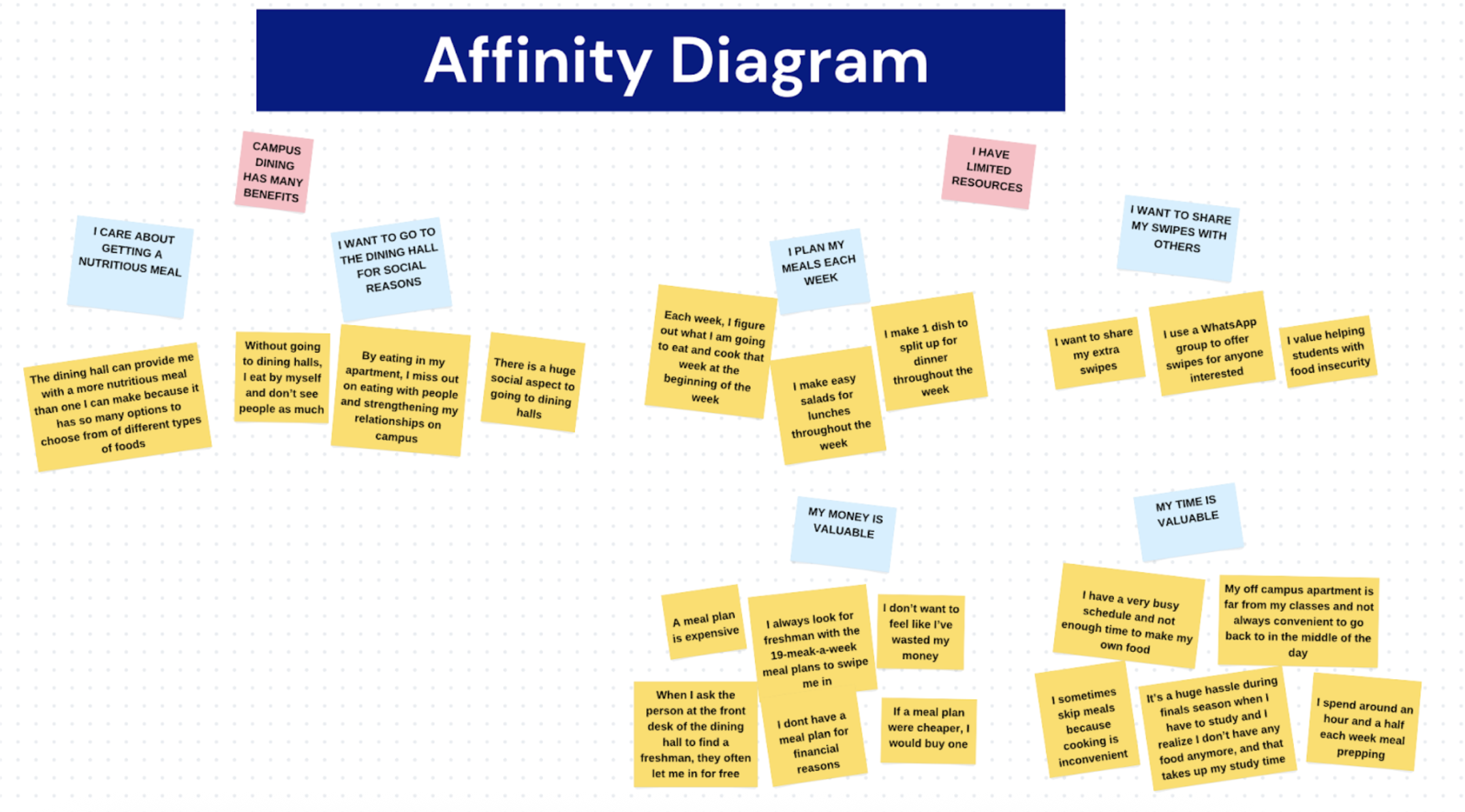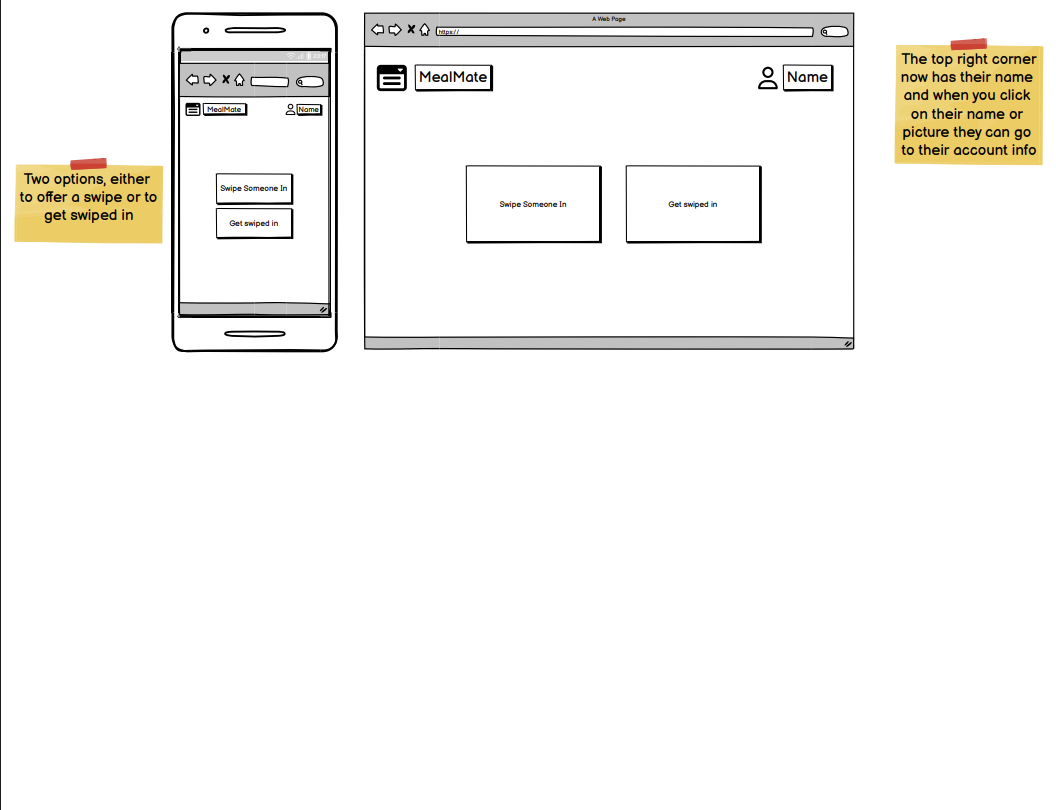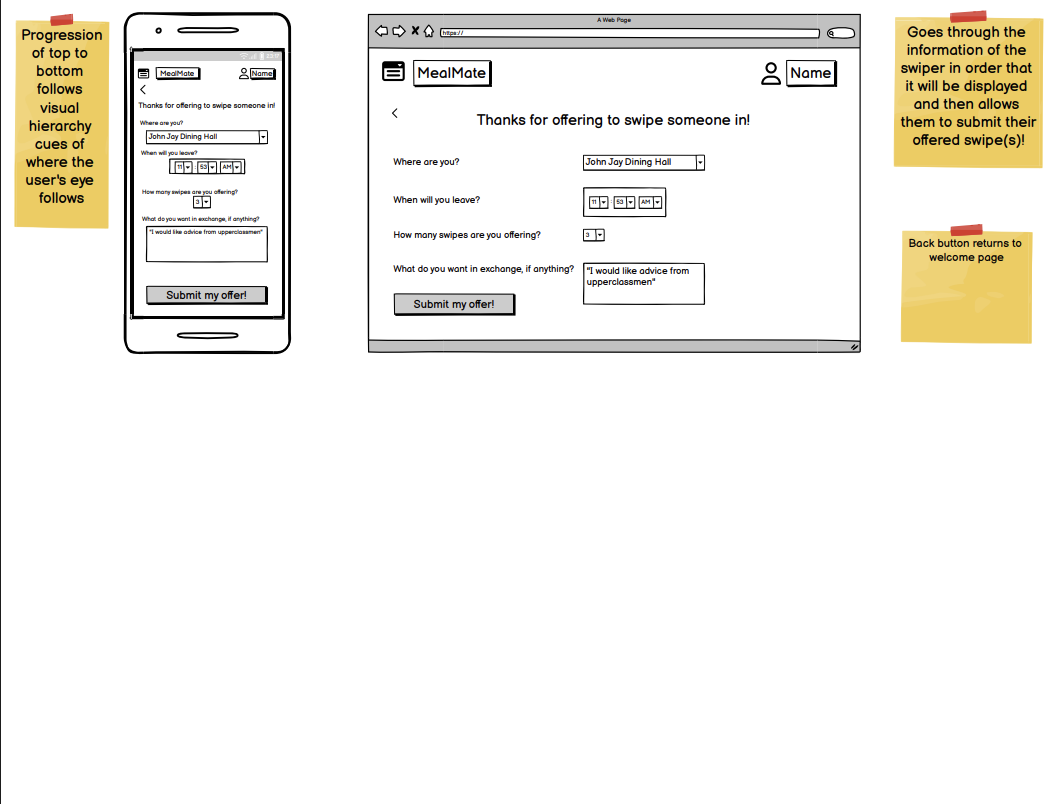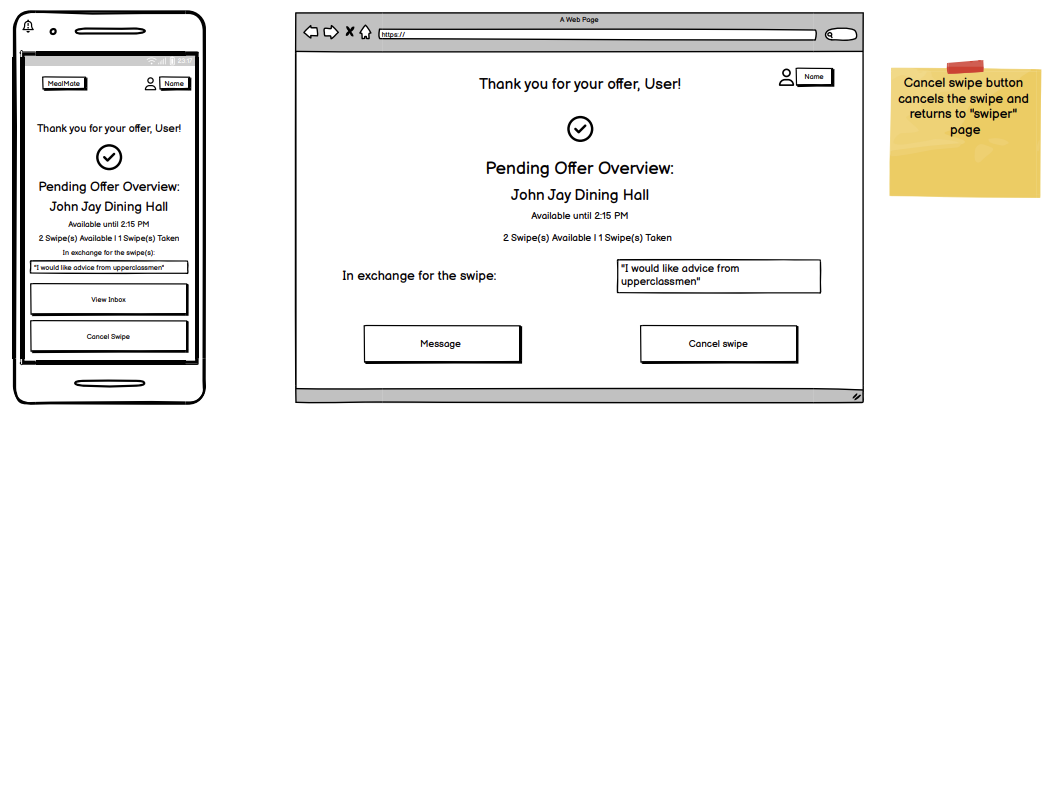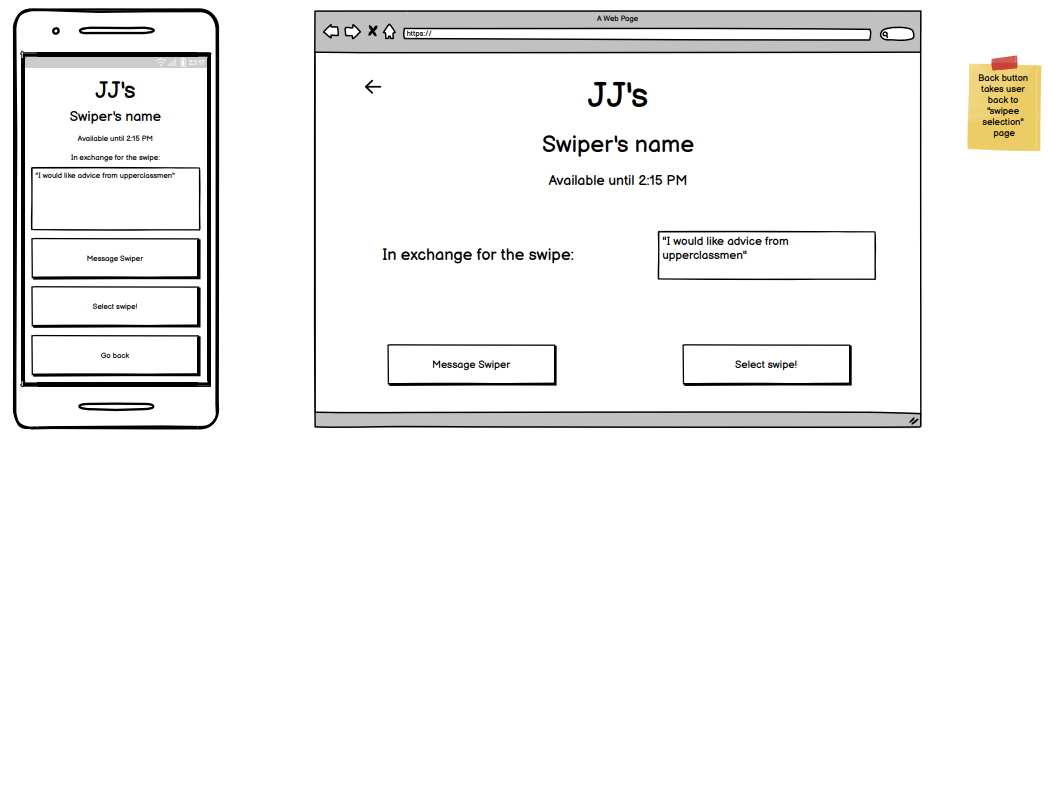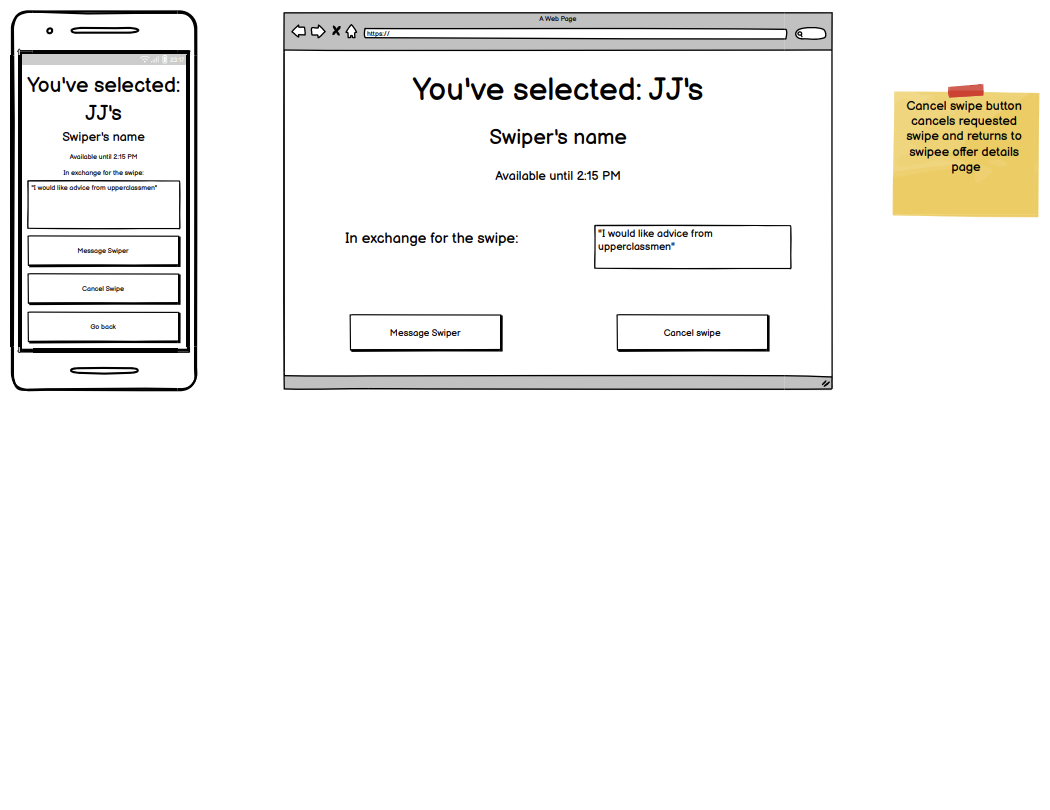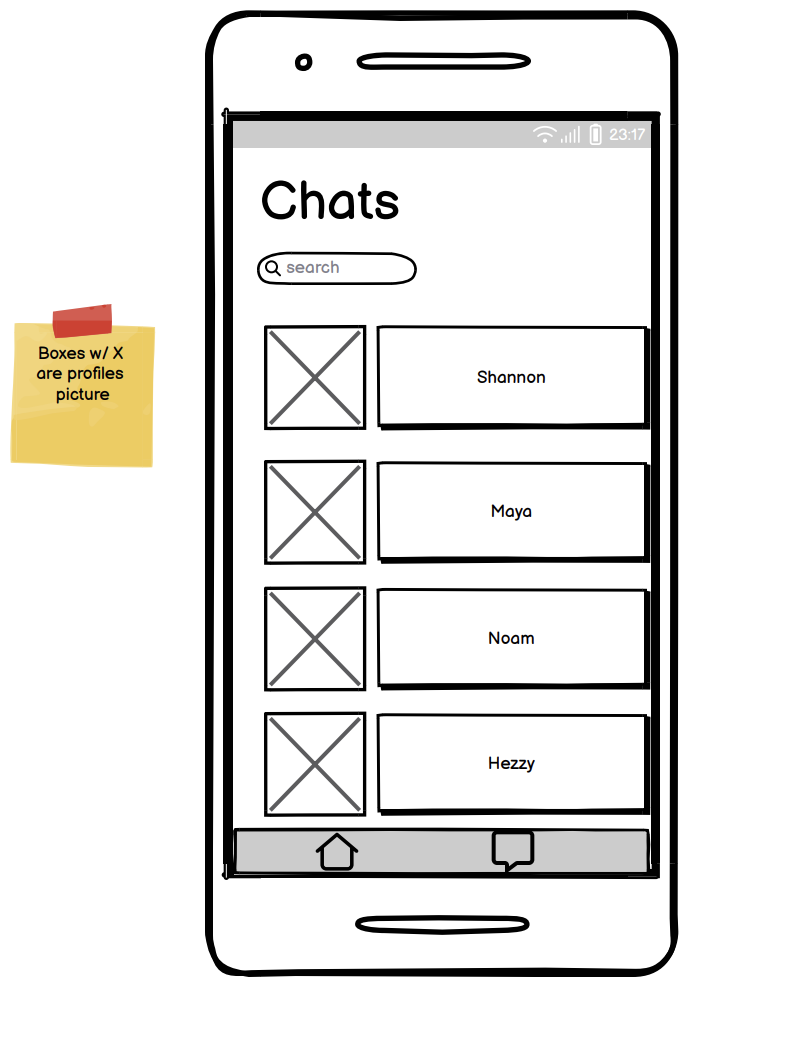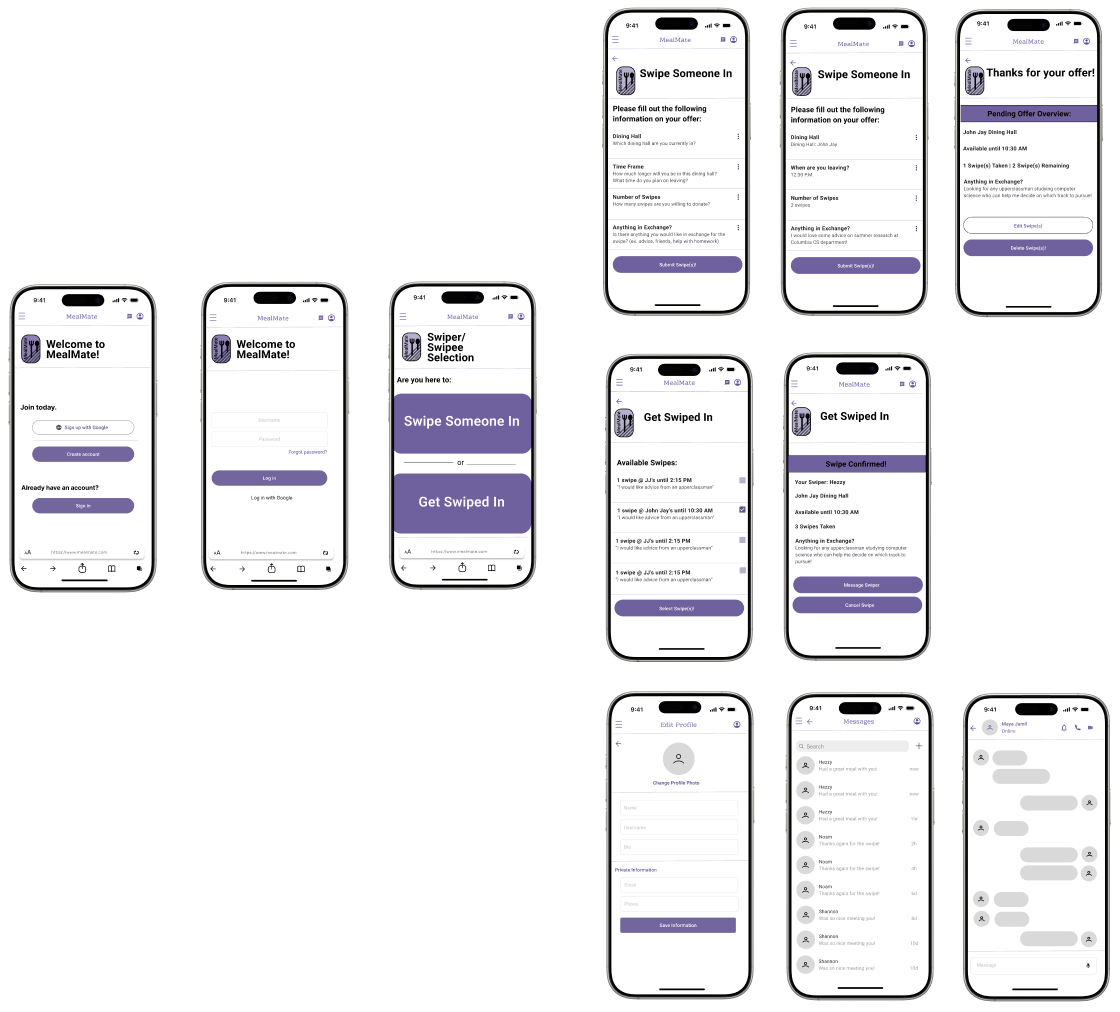Meal Mate
MealMate empowers Columbia students to support one another by sharing extra meal swipes, turning everyday generosity into a tool for campus-wide food security.
User Interface Design
#1 Brainstorming
Beginning with the theme of “social good on campus,” and drawing from personal experiences, my team and I brainstormed over fifteen project ideas — from academic support platforms to mental health campus resource guides. While each addressed a real student need, many had existing solutions or limited long-term impact.
Food insecurity quickly emerged as the most urgent and under-addressed issue. And while many students were quietly struggling to afford meals, thousands of meal swipes went unused each semester by freshman who did not need as many swipes as the required meal plan offered. The disconnect revealed a clear problem.
#2 Contextual Inquiry
In order to understand the problem on a deeper level, we conducted three contextual inquiries with our stakeholders, undergraduate students, to learn about the problem of food insecurity and the extent to which it impacts their day-to-day life.
We came to the following conclusions:
Students have a very busy schedule and not enough time to make their own food.
Since meal plans are expensive, some students always look for freshman with the 19-meal-a-week meal plans to swipe them in.
Some students get let into the dining hall for free because they are friendly with the staff member at the front desk.
Sometimes students skip meals because cooking is inconvenient.
The dining hall can provide a more nutritious meal than one homemade because it offers so many options to choose from, allowing for all types of food groups to fit into one meal.
For some students, their off-campus apartment is far from their classes and it is not convenient or feasible to go back in the middle of the day.
But by eating in their apartment, students miss out on social interactions and building relationships on campus.
#3 Affinity Diagram
#3 Affinity Diagram
After gathering this initial data from our interviews, we organized it with an affinity diagram. By grouping similar comments and observations, we were able to spot recurring themes, including security concerns, preferences for simple UIs, and the importance of meaningful connections. These clusters helped us identify areas where our design could have the most impact and refine our problem statement:
Problem statement: Students want to go to the dining halls but don’t have the resources
#4 Journey Map
Problem statement: Students get hungry but don’t have the resources for Columbia Dining meal plans, so they attempt finding alternative routes to eating in Columbia Dining without paying.
Design Hill #1: Food/Hunger Insecurity
#5 Storyboard
We then translated these insights into storyboards that show typical scenarios. Each storyboard highlights a challenge (like difficulty locating key features or worries about online scams) and illustrates possible ways to address those issues.
#6 Comparative Analysis
We created a description of at two existing (“status quo”) design solutions that can be viewed as competing alternatives to our own. Our analysis focussed on what these solutions do well and where they are deficient for solving our users’ problem. This is for the ultimate purpose of exploring a solution that would better solve our users’ problem better.
When addressing the issue of unused meal swipes and fostering social connections between students, we learned of two existing solutions worth analyzing: “Meal Swipe Shidduch” and “Kosher Food Hunt” (KFH). Both platforms had some utility for specific user bases, but they have significant limitations regarding broad usability and efficiency in solving the problem for all Columbia students.
#6 Low-Fi Prototype
#7 Hi-Fi Prototyping
Final Video
Final Video
After several stages, coded current design solution using HTML, CSS, JavaScript, Python (Flask), and React!
Here is our team video!
